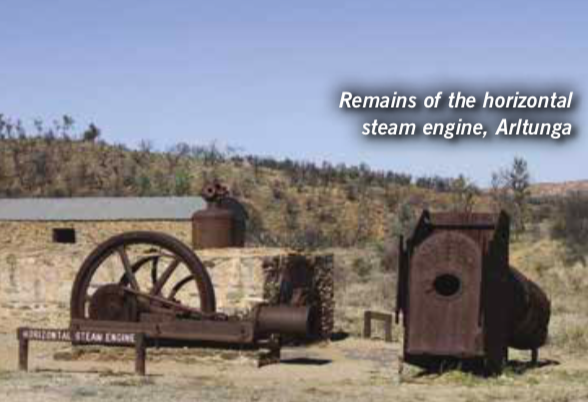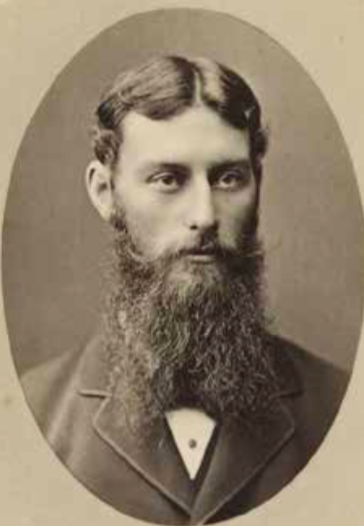Northern Territory gold
by Bushranger
We’d had the good fortune of having found gold in each state we’d visited in the past few years – Queensland, New South Wales and “Mexico” (Victoria) – and now it was time to turn our attention to the Northern Territory. Like NSW, the NT didn’t make you purchase a licence to fossick for gold but there were limits on the quantities of gemstones and minerals, including gold, you could remove. In Victoria a Miner’s Right will set you back $24.20 but that is for 10 years. Only Queensland rips you off by charging either $8.50 for one month, $32.25 for six months or $54.30 for an individual for one year!
While exploring the East MacDonnell Ranges, we visited the long-deserted gold rush town Arltunga, about 110km east of Alice Springs. Arltunga was the first major European settlement in Central Australia and the town was named after a subgroup of the Arrente Aborigines who had been living in the area for thousands of years.
The author’s biggest helping of NT gold
The Arltunga Visitor Information Centre has an excellent display of historical photographs and objects, and plenty of information about the history of the area, including descriptions of the mining techniques that were used in this unforgiving desert environment. We prospected for one week on the Arltunga goldfield and found several large gold-quartz specimens, some jasper, and a few interesting copper-quartz specimens. In the late 1880’s, the explorer David Lindsay, trekked through the area and observed that there appeared to be “rubies” in the bed of the Hale River at a location which was subsequently named Ruby Gap. A few years later, it was found that these gemstones were in fact high-grade garnets, and not gemstone-quality rubies, which, back then, attracted excellent prices in London.
A gold-on-quartz specimen for the collection
We found several small gem-quality pink garnets at Ruby Gap and Glen Annie Gorge, and in some parts of the dry, sandy bed of the Hale River we found areas of relatively recent wash which contained thousands of tiny pink garnets glistening in the sunlight.
After much research, including talking to several long-time NT gold prospectors and cattlemen, we suspected that our best chance of detecting gold would likely be in an area which was claimed to be “the richest alluvial goldfield in the Northern Territory.”
Fortunately, we obtained permission to fossick on a one-million- acre cattle station while the owners were conducting aerial mustering operations. We felt honoured, as complete strangers, to be the sole recipients of such incredible kindness from this wonderful family.
Over the next 10 days we were the only authorised fossickers on this huge property, and we explored some stunning and harsh terrain. We covered a lot of ground on foot, walking up to 22km per day, and covering more than 100km in seven days, in hot, dusty and windy conditions. Most days I swung my Minelab SDC 2300 for up to seven hours per day, and downed up to eight litres of water per day to keep hydrated. Fortunately I had a spare protective skid- plate cover for my detector coil as the sharp, hard rocks gouged through the plastic cover within a week of use.
The super-heavy duty ‘Little Brother Digger’ pick I bought on eBay was excellent for breaking the hard ground I encountered on a daily basis, and a 10mm heavy-duty, hardened steel chain was just the ticket for drag-gridding the small patches I found. Loaded up with all my gear, which probably added about 20% to my body weight, I felt like a pack mule but the custom-made soft orthotic insoles in my Aussie-made Redback boots made the task of trekking a lot easier. As a result of the hard yards we put in, we found gold nuggets and/or gold-on- quartz specimens every day, mainly near “greenstone” outcrops and “floater” boulders. I also found two patches where we recovered multiple gold nuggets. We also found several fine specimens of agate and jasper.
I have now used my SDC2300 for a few thousand hours in the field and am very impressed by the performance of this “Fast Pulse Inductor”. I’ve also had the opportunity to provide feedback to its inventor, Dr Bruce Candy.
I recently purchased some enhancement accessories for the 2300, including an acoustic soundshell and a knuckle cover, and am currently considering the merits of Garnets from Ruby Gap buying an 11-inch Coiltek Gold Extreme coil for detecting gold at greater depths.
Technically, an 11-inch coil has a diameter which is about 35% longer, and a surface area about 90% larger than the standard Minelab 8-inch coil. Coiltek provided air-testing data (of a 20-cent coin) which suggested an increased “air” detection depth in the order of about 20% using the 11-inch coil compared with the 8-inch coil. So, in some instances, I might achieve an increased detection depth of five or six centimetres.
Explorer David Lindsay (1856- 1922). In 1885 and 1886 Lindsay surveyed the country between the overland telegraph line and the Queensland border, explored the MacDonnell Ranges, made a brief foray into the Simpson Desert, and spent six month in the country between Lake Nash and Powell’s Creek
It makes me wonder how many slightly deeper gold nuggets I passed my coil over without knowing they were there. My “wish-list” prospecting kit would also include the addition of a “discontinued” Minelab GPX4500, complemented by a Nugget Finder Evo 15-inch coil. I better talk to my Minister of Food, Fashion & Finance about such a worthy future investment!








